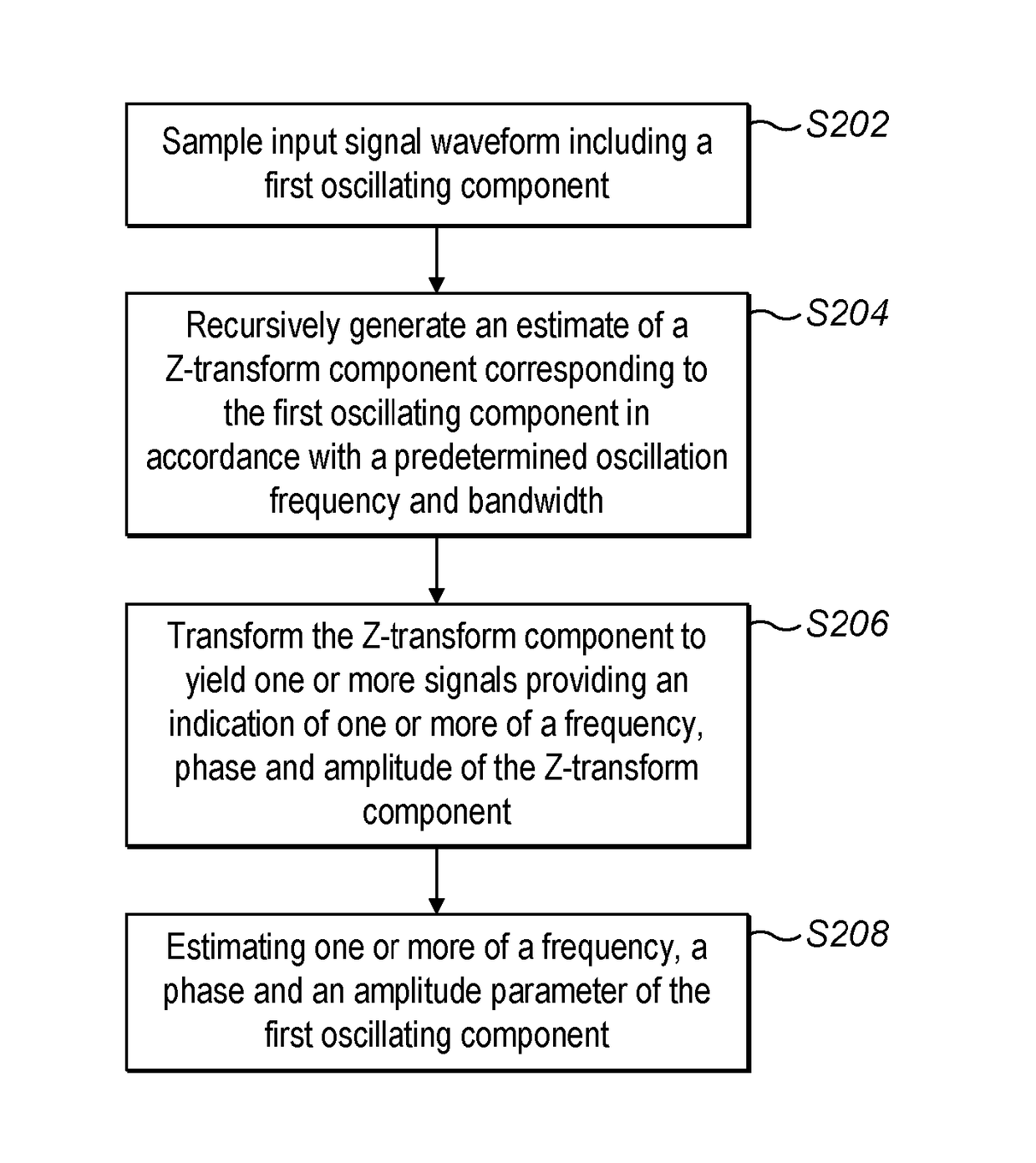Parameter estimation and control method and apparatus
a control method and parameter estimation technology, applied in the direction of instruments, frequency measurement arrangement, complex mathematical operations, etc., can solve the problems of affecting affecting the accuracy of phase measurement, so as to improve the quality of phase measurement
- Summary
- Abstract
- Description
- Claims
- Application Information
AI Technical Summary
Benefits of technology
Problems solved by technology
Method used
Image
Examples
Embodiment Construction
Waveform Characterisation and Parameter Estimation
[0080]The characterisation of an oscillating waveform, which may be a sinusoid hidden in noise for example, and subsequent estimation of the parameters in real-time or near real-time, is often required in a diverse range of fields such as physics, engineering, economics and statistics for example. Conventional techniques often utilise a discrete Fourier transform (DFT) to identify and then parameterise oscillating components in a sampled version of the signal of interest. However, as set out above, this can be a computationally inefficient approach in terms of the computations required but also memory requirements.
[0081]To mitigate the disadvantages associated with the use of existing techniques such as Fourier transforms for example, in accordance with an example of the present invention, a new wave characterisation technique is provided. The technique may be used to estimate parameters of any oscillating waveform but is particularl...
PUM
 Login to View More
Login to View More Abstract
Description
Claims
Application Information
 Login to View More
Login to View More - R&D
- Intellectual Property
- Life Sciences
- Materials
- Tech Scout
- Unparalleled Data Quality
- Higher Quality Content
- 60% Fewer Hallucinations
Browse by: Latest US Patents, China's latest patents, Technical Efficacy Thesaurus, Application Domain, Technology Topic, Popular Technical Reports.
© 2025 PatSnap. All rights reserved.Legal|Privacy policy|Modern Slavery Act Transparency Statement|Sitemap|About US| Contact US: help@patsnap.com



